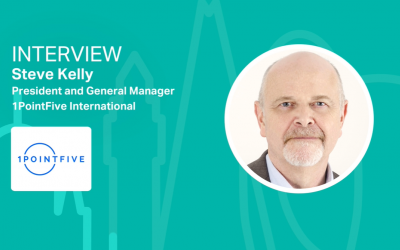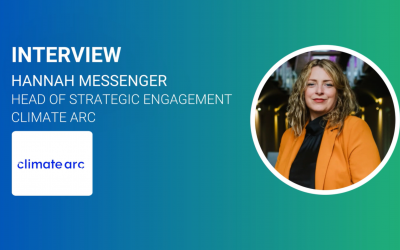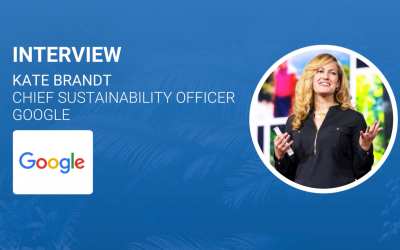Jennifer Anderson on why ESG is part of Carrier’s DNA
Climate Action caught up with Jennifer Anderson, Senior Vice President, Strategy, Business Development & Chief Sustainability Office at Carrier Global Corporation, to discuss the company's ESG strategy and why it is part of their DNA.

Climate Action caught up with Jennifer Anderson, Senior Vice President, Strategy, Business Development & Chief Sustainability Office at Carrier Global Corporation, to discuss the company's ESG strategy and why it is part of their DNA.
What is needed to make significant advances toward meaningful climate change improvements?
A change of this magnitude requires new approaches…new collaborations. It requires step-changes in decarbonization technology, in addition to expanded public-private partnerships and regulatory action.
To accelerate sustainable innovation, we recently established Carrier Ventures, a venture capital fund that is investing in a portfolio of companies selected for their next-generation technology. We are looking to these partners to disrupt ourselves and the industry as they develop and commercialize net-zero solutions.
What is Carrier’s ESG strategy?
ESG is part of our DNA at Carrier, and we have a three-pronged strategy:
- Our legacy is in creating the most energy efficient products in the market and now we are leading the way on decarbonization for our customers with Sustainability as a Service
- We continue to invest in the future of Sustainable products and solutions not through R&D but also through our M&A strategy and the recently announced Carrier Ventures fund where we intend to disrupt ourselves and the industry
- And we have established bold 2030 ESG goals to focused on sustainability, diversity & inclusion and support our communities
To you last point, what is Carrier’s goal for decarbonization?
For us at Carrier, our goal is to reduce the carbon emissions of our customers by 1 gigaton by 2030. And, we are making good progress against this target. Since 2020 alone, the adoption of our high-efficiency and lower GWP refrigerant products and avoided food waste has helped our customers avoid approximately 137M metric tons of GHG emissions.
Why is HVAC such an important piece of the solution?
While nearly 90 percent of U.S. homes overall have air conditioning, heat waves are hitting some of the least air-conditioned cities, including Seattle, where only about 44% of homes have air conditioning. Last summer, much of Western Europe experienced scorching heat, including France, Greece and Italy, and causing more than 1,000 deaths in Portugal alone, according to The Washington Post. Meanwhile, as temperatures topped 104 degrees in London earlier this year, less than 5 percent of homes in England have AC.
At the same time, much of the world’s economic growth is being driven by countries with hotter climates, growing populations and fast-rising incomes, where the demand for cooling is soaring. Only 4 percent of households in India have AC, for example, despite significant needs.
The growing demand for air conditioning in homes and offices around the world will be one of the biggest drivers of global electricity demand over the next three decades, according to the International Energy Agency, a Paris-based think tank. The IEA reports that global energy demand from air conditioners is expected to triple by 2050.
All this means the need for cooling has become a critical factor in the debate about reducing greenhouse gas emissions: Buildings account for 40% of global greenhouse gas emissions and 40% of that is from HVAC. It’s a vicious cycle: the hotter the Earth gets, the more demand for air conditioning grows. But more air conditioning drives greenhouse gas emissions, leading to further climate change.
How should companies view the role of investments and M&A transactions in achieving sustainability objectives by either shedding businesses that no longer align with those goals or prioritizing acquisitions that improve a firm’s ESG profile?
Sustainability is built into the fabric of our business at Carrier, and that includes our M&A and investment decisions. Organizationally, we have M&A, Carrier Ventures, and sustainability all under one roof in our organization, which allows sustainability to be a driver in all decisions.
ESG has always been a consideration in our due diligence process. With increased rigor in the sustainability space, we have also enhanced our own processes.
Carrier was an Industry Partner for the Sustainable Innovation Forum at COP27. Missed the Forum? You can watch all the content, including Carrier's sessions, here.






